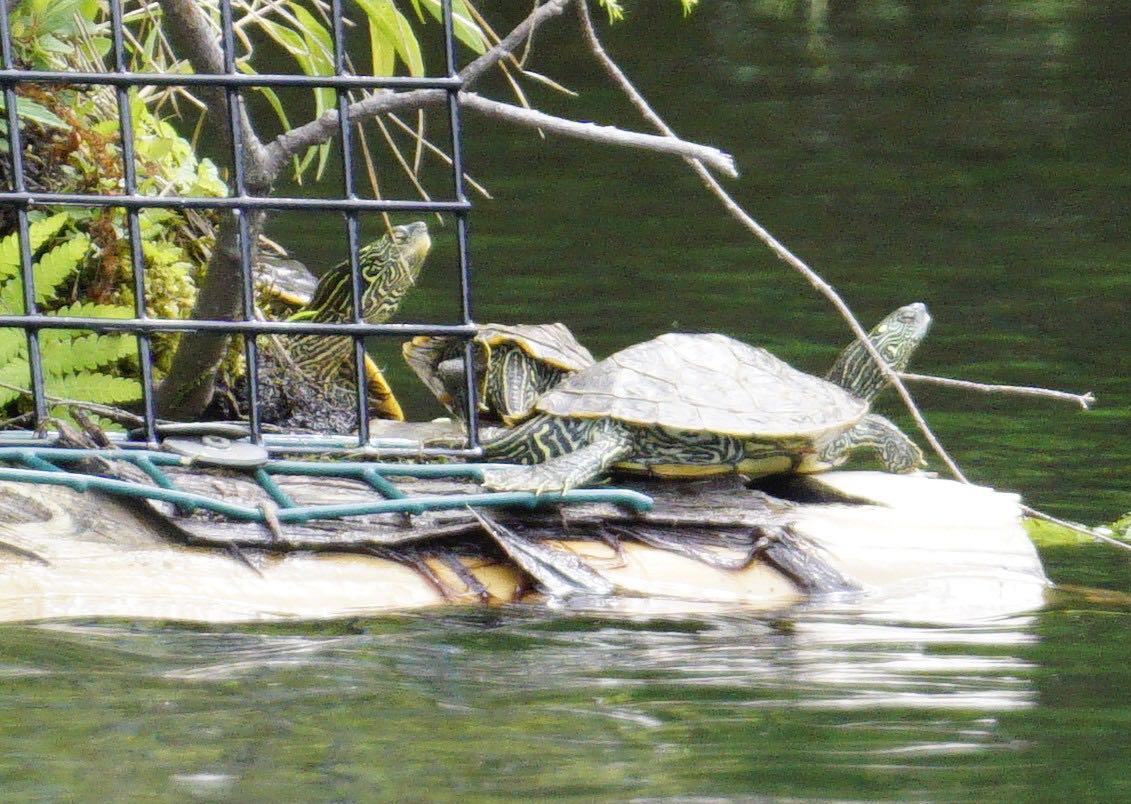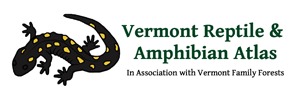
Herp Update: Map turtle mystery; fall frog calls; bullfrog gape — September 2, 2022
Herpers, it has been too long since I sent out an update.
Here in the office we have been really busy keeping up with the records that are being sent in by others (~375 during July and August) and those that we have gathered ourselves (another ~375).
Some of the records are pretty straightforward but others require follow up. Species are often misidentified, but as long as they are accompanied by some decent photographs we can figure out what the species was, correct the record, and get it into the database. More difficult are those records without clear photographs or without a decent description of the herptile that was seen. For these, we have to probe for additional details; sometimes we get those details, sometimes we don’t. If we don’t, we have to decide whether to discard the report or enter it into our database as unverified.
Northern Map Turtles in Sunset Lake
We recently received reports of Northern Map Turtles from Sunset Lake in Orwell. Prior to this year, populations of Northern Map Turtles were only known in Vermont from Lake Champlain and the mouths of its major tributaries. However, in July of this year Paul Schroeder sent us a photo of what appeared to be a Northern Map Turtle from Sunset Lake in Benson.
Although he worked to get that photo, the photo was not clear enough to rule out some other species of map turtle from the southern US that are sometimes imported and kept as pets. Sadly for us and the turtles, these pets are occasionally released in Vermont.
On August 14, Mark Krautheim sent us another photo of an unusual turtle from Sunset Lake and this one was definitely a Northern Map Turtle. At that time, our assumption was that someone moved that turtle into Sunset Lake and it was a loner, not a part of a larger population. But on August 22, Mark sent another photo showing four Northern Map Turtles basking on a raft in Sunset Lake (attached). So, it clearly looks like a population of Northern Map Turtles exists in Sunset Lake, but we still don’t know how they got there.

Evidence from the midwest suggests that map turtles could have traveled there on their own from Lake Champlain. The straight line distance is about 3.5 miles, but it is also possible that someone moved them all from either within Vermont or outside of Vermont. This could have been intentional or accidental (e.g., moving mulch or soil with eggs in it).
Moving species (and releasing pets) is dangerous in that it runs the rest of introducing new diseases, parasites, and microorganisms, or altering ecosystems in harmful ways. Most non-native herps released in Vermont will die during our first winter, but a few are hardy enough to survive.
The origin of our Sunset Lake Northern Map Turtles is a mystery and may remain a mystery for a long time. Genetic tests could shed some light on their origin, but small states like Vermont rarely have the personnel, time, or money, to do that type of work.
Current Herp Activity
The mating calls of frogs have almost entirely ended for the year. You may still hear a few late season “gunks” from Green Frogs, or maybe even an American Bullfrog on a warm night, but otherwise, their chorus has been replaced by calling insects such as crickets, and cicadas. Spring Peepers have started their fall calls from the forest floor, but this is not a mating call.
“Gape Limited”
Speaking of American Bullfrogs, check out this video forwarded by Kiley Briggs:
https://www.facebook.com/groups/196138372533017/permalink/426371832843002/
We have caught American Bullfrogs that had eaten chipmunks and we received a reliable report of an American Bullfrog in Cornwall that captured a Short-tailed Weasel.
The term “gape limited” is used to describe the diet of some herptiles. In the case of frogs, it means they will eat anything that moves that they can fit into their mouths. However, as the video shows, although certain parts of a critter may fit in their mouths, it does not mean that the entire animal will fit!
Jim
“Anyone who believes that exponential growth can go on forever in a finite world is either a madman or an economist” (Kenneth Boulding, 1973)

